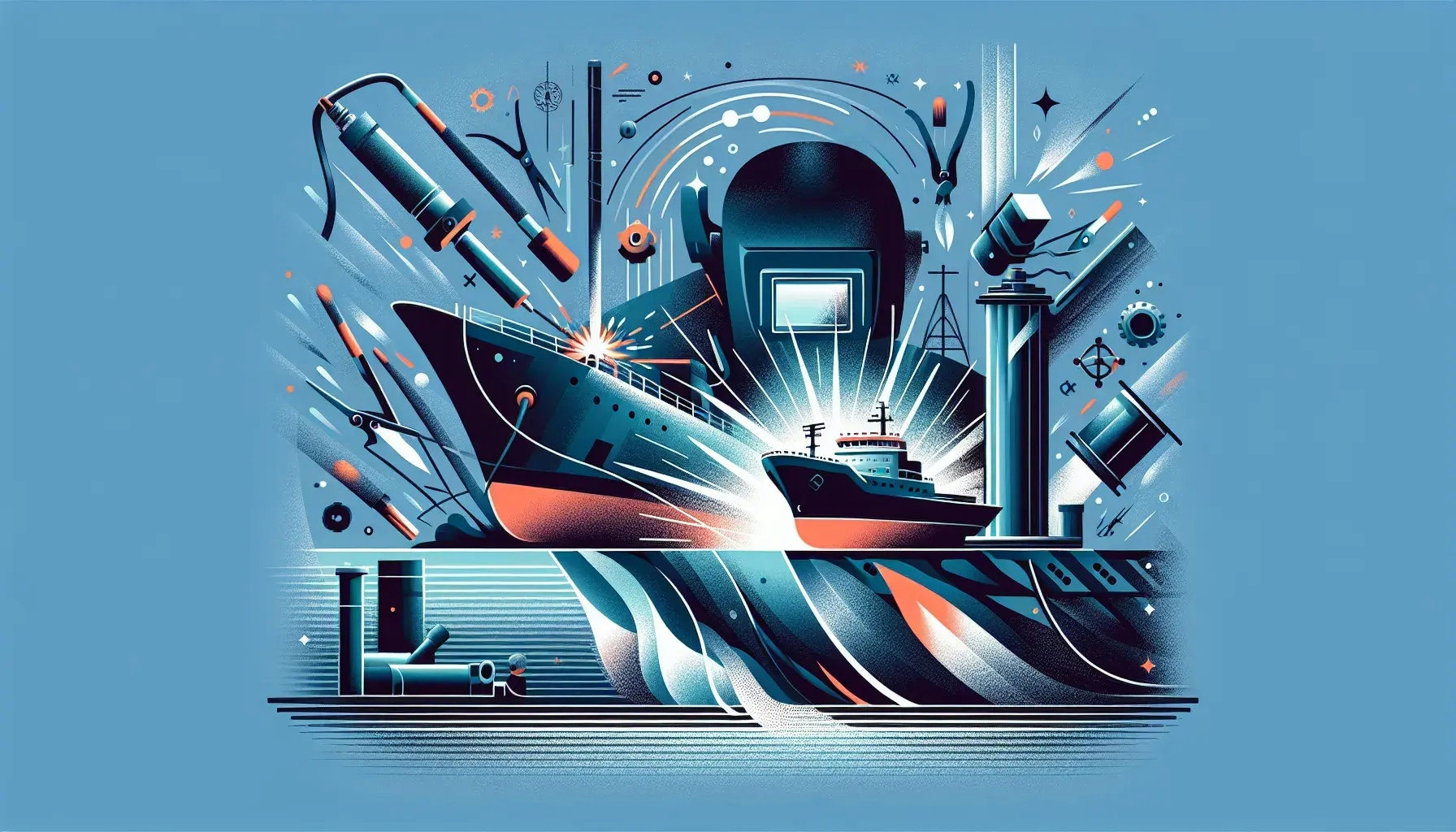Importance of Welding in Shipbuilding
Shipbuilding.io

The shipbuilding industry has always been a cornerstone of global trade, with its importance growing exponentially over the centuries. One of the key elements that have made this possible is welding. This blog post will delve into the significance of welding in shipbuilding, exploring its various aspects and how it contributes to the overall efficiency and safety of ships.
The Evolution of Welding in Shipbuilding
Welding has come a long way since its inception. In the early days of shipbuilding, riveting was the primary method of joining metal pieces. However, the advent of welding technology brought about a significant shift in the industry. Welding offered a more efficient, reliable, and cost-effective solution for constructing ships.
The transition from riveting to welding wasn't immediate. It took years of research, development, and testing before welding became the standard in shipbuilding. The shift was gradual, with shipbuilders initially using welding for non-structural components. As the technology improved, so did its application, eventually leading to the construction of fully welded ships.
The evolution of welding in shipbuilding is a testament to the industry's commitment to innovation and progress. It reflects the constant strive for efficiency, safety, and quality in ship construction.
The Advantages of Welding in Shipbuilding
Welding offers numerous advantages in shipbuilding, making it an indispensable part of the process. One of the primary benefits is the strength and durability it provides. Welded joints are typically stronger than the base metal, ensuring the structural integrity of the ship.
Welding also allows for the creation of seamless structures, eliminating the need for rivets and bolts. This results in a smoother surface, reducing water resistance and improving the ship's speed and fuel efficiency.
Another advantage of welding is its versatility. It can be used with a variety of metals and alloys, making it suitable for different types of ships. Whether it's a small fishing vessel or a massive cargo ship, welding plays a crucial role in its construction.
Moreover, welding offers cost and time efficiency. It requires less labor and materials compared to traditional methods, reducing the overall cost of shipbuilding.
Welding Techniques in Shipbuilding
There are several welding techniques used in shipbuilding, each with its unique advantages and applications. Among the most common are shielded metal arc welding (SMAW), gas metal arc welding (GMAW), and gas tungsten arc welding (GTAW).
SMAW, also known as stick welding, is a versatile method that can be used in various positions and environments. It's particularly useful for welding thick materials and performing repairs.
GMAW, or MIG welding, is known for its speed and efficiency. It's ideal for long, straight welds, making it a popular choice for shipbuilding.
GTAW, or TIG welding, offers high precision and quality. It's often used for welding thin materials and complex joints.
Each of these techniques has its place in shipbuilding, contributing to the industry's ability to construct durable, efficient, and safe ships.
Safety Considerations in Welding
While welding offers numerous advantages, it also comes with potential hazards. Therefore, safety is a paramount concern in shipbuilding.
Welders are exposed to various risks, including burns, eye damage, and exposure to harmful fumes. To mitigate these risks, they must adhere to strict safety protocols. This includes wearing appropriate personal protective equipment (PPE), such as welding helmets, gloves, and respirators.
Proper ventilation is also crucial to ensure the removal of harmful fumes. In confined spaces, additional measures, such as the use of exhaust fans or respirators, may be necessary.
Training is another critical aspect of safety in welding. Welders must be adequately trained in the safe use of welding equipment and the handling of emergencies.
The Future of Welding in Shipbuilding
The future of welding in shipbuilding looks promising, with advancements in technology paving the way for more efficient and safer practices.
One such advancement is the use of automation and robotics. Automated welding systems can perform repetitive tasks with high precision and consistency, reducing the risk of human error. They also minimize exposure to hazardous conditions, enhancing worker safety.
Another promising development is the use of new materials and welding techniques. For instance, friction stir welding (FSW) is a relatively new method that offers several advantages, including high-quality welds and reduced distortion.
Despite these advancements, the role of skilled welders remains crucial. They are responsible for overseeing the automated processes, performing complex welds, and ensuring the quality and safety of the work.
The Impact of Welding on the Shipbuilding Industry
The impact of welding on the shipbuilding industry cannot be overstated. It has revolutionized the way ships are built, contributing to the industry's growth and success.
Welding has enabled the construction of larger, more durable, and more efficient ships. It has also made shipbuilding more cost-effective, opening up opportunities for smaller companies and countries.
Moreover, welding has played a significant role in improving the safety of ships. By providing stronger and more reliable joints, it has reduced the risk of structural failures, contributing to safer voyages and fewer maritime accidents.
Welding: The Backbone of Modern Shipbuilding
In conclusion, welding plays a pivotal role in the shipbuilding industry. It has transformed the way ships are built, offering numerous advantages in terms of strength, efficiency, and cost. Despite the potential hazards, with proper safety measures and training, welding remains a safe and effective method for ship construction. As technology continues to advance, the importance of welding in shipbuilding is likely to grow even further, reinforcing its status as a cornerstone of the industry.